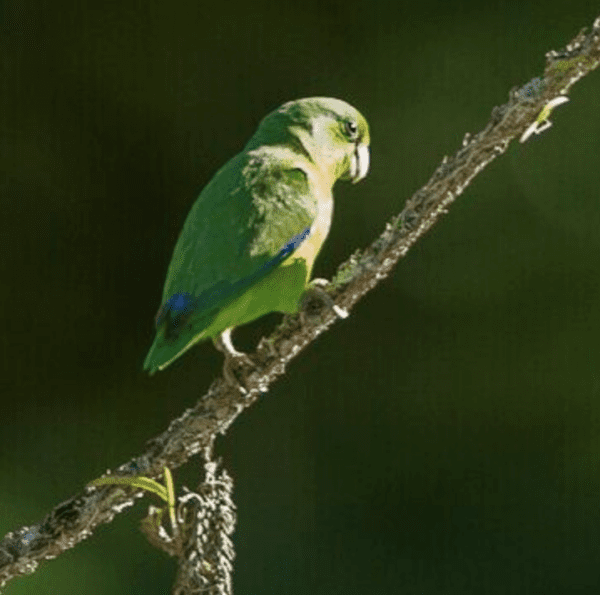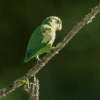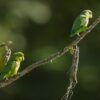Riparian Parrotlet
Also known as:
Large-billed Parrotlet
Also known as:
Large-billed Parrotlet
DID YOU KNOW?
The Riparian Parrotlet is closely related to the Blue-winged Parrotlet (Forpus xanthopterygius).

Forpus

crassirostris
Size:
12 cm (4.7 in)
Weight:
28 g (1.0 oz)
Subspecies including nominate:
two: F.c. crassirostris, F.c. ollalae
Colour Adult:
F.c. crassirostris: Male-paler blue markings; pale grey/purple primary coverts; dark purple/blue secondary coverts; smaller size. Female-green less yellow overall.
F.c. olallae: Male-as in crassirostris, but darker purple/blue wings, rump and lower back; paler underwing coverts. Female-as in crassirostris.
Colour Juvenile:
Unknown.
Call:
Calls in flight or when perched are a penetrating buzzy, high-pitched and screechy “zeet”. While feeding is twittering and chattering.
More Information:
Content Sources:
Captive Status:
—
Longevity:
—
Housing:
—
Diet:
Not recorded.
Enrichment:
—
Nest Box Size:
—
Clutch Size:
Not recorded.
Fledging Age:
—
Hatch Weight:
—
Peak Weight:
—
Weaning Weight:
—
World Population:
Unknown, but thought to be common over its range.
IUCN Red List Status:
Not Evaluated
CITES Listing:
Appendix II
As conspecific with T. xanthopterygius.
Threat Summary:
Not yet evaluated, but likely common over most of range.
Range:
F.c. crassirostris: NE Peru, E Ecuador and SE Colombia east along both sides of Amazon River and smaller riverlets to C Amazonas, N Brazil.
F.c. olallae: found in Codajas and near Itacoatiara, on N bank of Amazon River in E Amazonas, N Brazil.
Habitat:
Lowland rainforest edge and secondary growth forest, mainly below 500 m.
Wild Diet:
Largely unknown but likely feeds mainly on fruit and seeds of plants in secondary vegetation.
Ecology and Behaviour:
No reported movements, but may move seasonally or altitudinally due to food availability.
Clutch and Egg Size:
Likely similar to F. xanthopterygius: 3-7 spherical to elliptical eggs, 19.0 x 15.0 mm (0.7 x 0.6 in)
Breeding Season:
Precise timing unclear; occupied nest cavity in July, Colombia. No further information.
Related Links:
—



